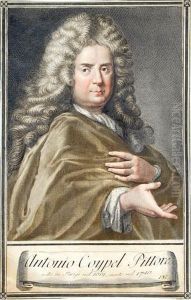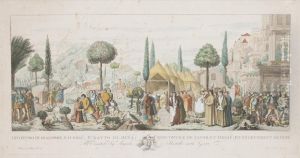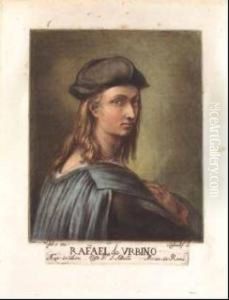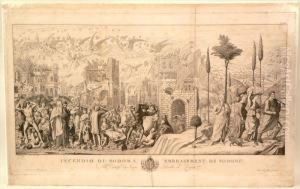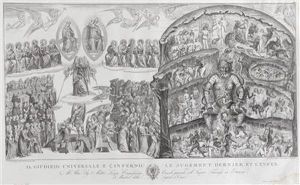Carlo Lasinio Paintings
Carlo Lasinio, born in Treviso, Italy, in 1759, was an influential figure in the world of Italian engraving and printmaking during the late 18th and early 19th centuries. His career spanned a period of significant transformation in European art, embracing the transition from the Baroque and Rococo styles of the early 18th century to the burgeoning Neoclassicism and Romanticism of his time. Lasinio is particularly renowned for his mastery in engraving, a discipline that requires not only artistic skill but also technical prowess.
Lasinio's early life is somewhat obscured, but it is known that he was deeply immersed in the artistic environment from a young age. He worked extensively in Florence, a city that was a crucible for artistic innovation, serving as a vital hub for artists, writers, and intellectuals. There, Lasinio was exposed to the rich tapestry of Renaissance art, which undoubtedly influenced his stylistic development. His work is characterized by meticulous attention to detail and a keen sense of composition, qualities that made his engravings highly sought after.
Perhaps one of Carlo Lasinio's most significant contributions to art history was his project to document the frescoes in the Camposanto of Pisa. Recognizing the importance of these medieval and Renaissance frescoes, and concerned about their deterioration, Lasinio undertook the task of creating detailed engravings of these works. This project was not only an artistic endeavor but also an act of cultural preservation. Through his engravings, Lasinio ensured that the essence of these frescoes was saved for future generations, a testament to his vision and dedication to the arts.
Lasinio also played a crucial role in the education of artists and the dissemination of artistic knowledge. He was appointed as a professor at the Academy of Fine Arts in Florence, where he influenced a generation of young artists, instilling in them the importance of technical skill and historical awareness. His legacy is thus twofold: his own artistic output, which includes a vast array of engravings that capture the spirit of his time, and his impact on the development of future artists.
Carlo Lasinio passed away in 1838, leaving behind a body of work that continues to be celebrated for its precision, beauty, and historical value. His contributions to the fields of engraving and printmaking remain invaluable, marking him as a pivotal figure in the transition between the artistic movements of the 18th and 19th centuries.
